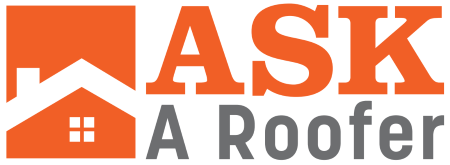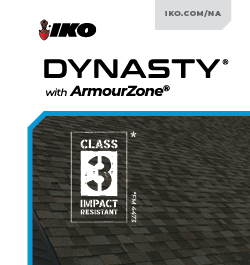What kind of roofing do you have? Is it a flat roof or a residential roof?
Both steep- and low- slope roofs come with different benefits and considerations. Buildings with a steeper slope often shed snow, rain and debris shed more efficiently because of their angled sides. This can make your roof last longer with fewer roof leaks. However, the angle can allow wind to get underneath the attached roofing material, causing wind-related roof problems. Further, this slope also means it can be more difficult for roofers to work on your roof as opposed to lower-slope options, making things like roof maintenance slightly more challenging.
So what exactly defines a low-or steep- slope roof? Slope in the roofing industry uses that same "rise over run" idea that you learned in school. Rise refers to the vertical height of the roof from the lowest edge of the roof to the highest point, known as the ridge. Run refers to the measurement from the outside of the eave to the point below the center of the ridge. These two measurements are expressed as inches per foot and is written in a ratio format, producing the slope of a roof.
In the roofing industry anything that has a slope of 3:12 or below is considered low-slope. This means that for every 12 horizontal inches (run), the roof has a rise of three or less vertical inches. The slope of a roof is expressed as inches per foot and is written in a ratio format. It is important to note that, while low-slope roofs may look flat to the naked eye and we often use that term colloquially, technically no roof is fully flat, there will always be a slight slope!
Alternatively, anything that has a slope of 3:12 or above is considered steep-slope. Steep-slope roofs are generally used in residential roofing as they shed water efficiently and there are many roofing materials that can be used on them to achieve your desired look.

A dormer projects out from the rest of the roof and typically have windows. Dormers are added for beauty and style and also add space and light to the inside of the house.
Photo Credit: Elite Roofing

A gable roof is something a child might draw. This type of roof has two sloping sides that join together at the top to form a ridge, thus creating end walls and a triangular extension, which is known as a gable.
Photo Credit: The Durable Slate Company

Each sloping roof section of a gambrel roof is divided into two parts. The first is the portion close to the ridge that is relatively flat. The second part, which is closer to the eaves, drops down steeply. This style of roof creates maximum use of space under the roof.
Photo Credit: Metal Roof Specialists

A hip roof slopes back from all four sides. Hip roofs don't have valleys where leaves can collect and sometimes cause complications.
Photo Credit: Elite Roofing

This unique roof is a gable roof with the ends of the gables clipped to resemble a hip roof. By clipping the ends, the peak of the gable roof is streamlined, which reduces the stress caused by wind as well as diminishes the potential for wind damage.
Photo Credit: Metal Roof Specialists

Often colloquially called a flat roof, low-slope roofing performs well against wind damage. However, because these types of roofs shed water slower, they have more potential issues with water damage and subsequent roof leaks. Because of this, low slope roofs often use coatings and similar waterproofing roofing products. When it comes to different types, low slope roofs can be made with a variety of products and methods.
Photo Credit: Elite Roofing

Each sloping section of a mansard roof is divided in two. The section of the roof closest to the walls rises steeply to create maximum space under the roof. The roof then continues at a milder pitch towards the center.
Photo Credit: Henry Staggs

A shed roof slants in just one direction. These roofs are easy to build since the rafters are all identical.
Photo Credit: The Durable Slate Company

A skillion roof is one single flat surface and differs from a standard flat roof due to the steeper and more noticeable pitch.
Photo Credit: Metal Roof Specialists

Turret roofs, also known as a conical or radius roofs, are a small, round or polygonal tower topped with a conical or hipped roof.
Photo Credit: Great Roofing and Restoration










